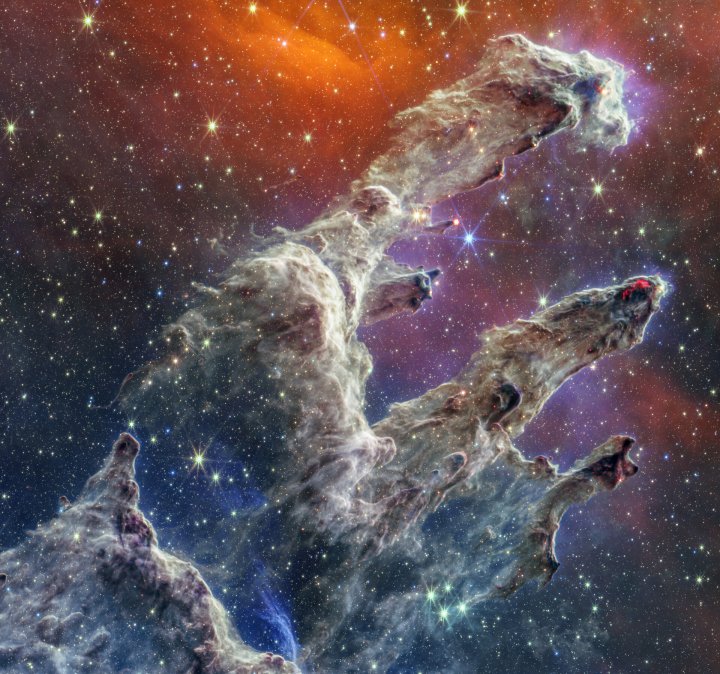One of the most famous space images of all time is the Hubble Space Telescope’s image of the Pillars of Creation, originally taken in 1995 and revisited in 2014. This stunning structure of dust and gas is located in the Eagle Nebula and is remarkable both for its beauty and for the dynamic process of star formation going on within its clouds.
Earlier this year, the James Webb Space Telescope took its own images of this natural wonder, capturing images in both the near-infrared and mid-infrared wavelengths. Now, both of Webb’s images have been combined into one, showing a gorgeous new view of the famous structure.

This image combines data from Webb’s Near-Infrared Camera (NIRCam) and Mid-Infrared Instrument (MIRI). The near-infrared range shows up features like the many stars in the background and the newly forming stars which are visible as orange dots around the pillars of dust, while the mid-infrared range shows the layers of dust which are displayed in colors ranging from orange to indigo depending on their density.
Combining images taken at different wavelengths like this allows an image to display features that would otherwise be invisible. In Webb’s mid-infrared image of the pillars, for example, very few stars are visible, while the near-infrared can’t penetrate the deep layers of dust to show such detail.
The pillars’ dust makes them such a busy region of star formation, as new stars are created when dust forms into knots which gradually attract more material until they collapse under their own gravity and become protostars. More and more material is drawn into these cores, getting hot and hotter due to friction, until eventually, the protostar reaches a sufficiently high core temperature that it begins fusing hydrogen into helium, radiating out heat and light and becoming a main sequence star.



